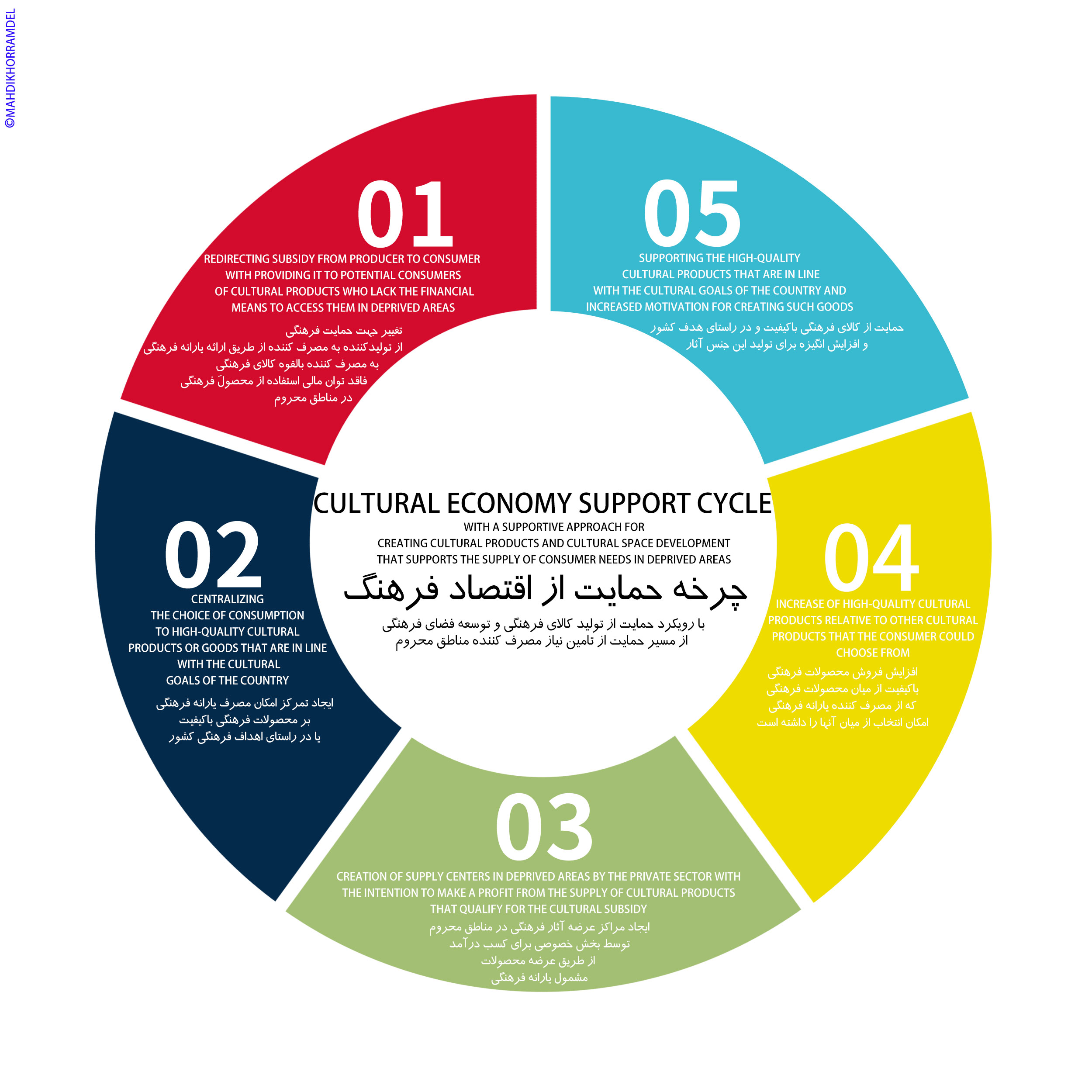 Last night I was talking to a decision maker about the statistics given by the Iranian culture minister about 88% of Iranians not going to movies in their lifetime. I said the solution is redirecting the governmental fundings from producer to consumer and here is my plan:
Last night I was talking to a decision maker about the statistics given by the Iranian culture minister about 88% of Iranians not going to movies in their lifetime. I said the solution is redirecting the governmental fundings from producer to consumer and here is my plan:
The Structure of Iran's economy in the cultural field is similar to France. Cultural products that are distinguished and of high quality often are made using governmental funding but since money is paid up front, there is no control over the quality of work and usually, final product's quality is lower than the budget that is spent on making it.
Since the producers of such products get the cost of production from the government and they have access to direct or indirect methods of funding, so they don't feel the need to create quality work to ensure the return of investment.
 Iran faces a more serious challenge and that is lack of cultural facilities, especially movie theaters in many cities. In a number of cities consuming cultural products and art is not a part of the basket of goods for the majority of people because people lack the financial means to use such products.
Iran faces a more serious challenge and that is lack of cultural facilities, especially movie theaters in many cities. In a number of cities consuming cultural products and art is not a part of the basket of goods for the majority of people because people lack the financial means to use such products.
In these areas, the government builds movie theaters in line with its obligations for the development of infrastructures of the country but they remain empty even with half-priced tickets. Therefore the government has lost its motivation to build theatres in deprived areas.
I was asked to provide a plan to exit such conditions. My recommendation was to redirect the subsidies from producer to consumer. In this plan, the cultural budget is provided to consumers in the form of subsidies that are only usable for purchasing cultural products. Consumers then can use that subsidy to purchase any of the designated products that have been evaluated to be high quality and with higher cultural goals.
Products that have higher quality and are more in line with the cultural goals of the country get a higher percentage of subsidy. For example, a high-quality war movie will get a 70 % subsidy on the ticket and a move of mediocre quality that is in line with cultural goals will get a 30% subsidy and a high-quality comedy movie will get a 10 % subsidy. Consumers can freely choose where to spend their subsidy and pay rest of the price themselves, needless to say in this plan higher quality works will sell more.
in this method, the return of investment depends on audience choice, so producers who have not been paid with governmental funding will lean toward making higher quality works to attract this new audience who watch movies using their subsidy to theaters, by convincing the consumer to watch their movies they can make profit and have a higher box office gross.
The other side to this is that private investors build more theaters to attract this new body of consumers and profit from their use of subsidies. The government can benefit from taxes placed on these theaters and pay for its administrative and supervisory bodies.
The government doesn't need to intervene directly in making cultural products or building facilities and a healthy cultural economy support cycle is created.
*Mr. Khorramdel is Director of Multimedia Office & Culture Editor in TABNAK.com he is a Filmmaker and independent film critic.